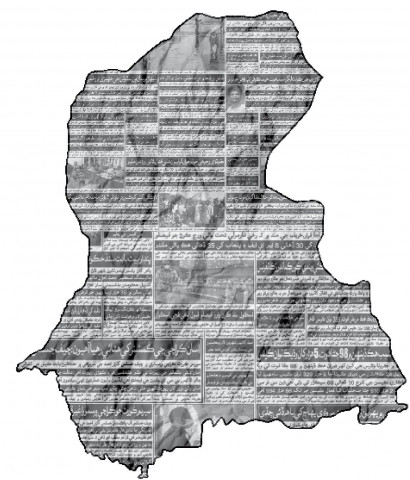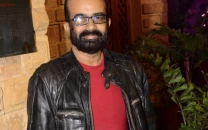Regional dailies : A world where print lives another day
In districts like Qambar, Larkana newsies continue to sell out and close shop by noon in the digital age

For print-media, the growth of the internet has been akin to a slow-driving nail in the coffin of an industry, which once sat at the helm of many revolutions.
Today, as print publications slowly disappear from the public eye, it’s more common to stumble upon newspapers soaking oil from meals served at fast-food outlets than to see them being read.
However, where most national publications have had a hard time surviving the fall of print, regional language newspapers have met a different fate altogether. The deeper one traverses across Sindh, more alive the lost medium begins to appear.
In districts like Qambar Shahdadkot and Larkana newsies still continue to sell out and close shop by noon, public squares and verandas turn abuzz with communal readings and discussions come evening and each day still ends in anticipation for the previous day’s headlines in the morning paper.
Abdul Rasool Gopang, a 56-year-old grizzly looking man, who runs a small grocery store in Qambar town, is one of the oldest subscribers of a Sindhi newspaper circulating in the city. The shopkeeper, although illiterate, has not gone a day without weighing up on the day’s headlines.
“I can’t read myself, but I have been getting the newspaper every day without a miss for the past 29 years. I wait for my friends to join me every evening, where one reads the paper to us, and we listen,” said Gopang. “The entire paper has to be read. We don’t even miss tenders and court orders. It is only then that we chew on the country’s political affairs,” he added laughingly.
Read more: ‘Follow-up on issues missing from today’s journalism’
Waheed Abro, who runs a newspaper stand in Larkana city, sells out over 250 copies of Sindhi dailies in the first three hours of opening his shop every day. Most of his customers are the city’s senior citizens, who like Gopang and his friends, anxiously wait to congregate and read the news, at the local park every day. “The advent of television, smartphones and social media has definitely affected readership to a certain extent, but regional language papers still retain their popularity here. People still wait for the morning paper each day, and sometimes when I get a little late, they start calling my phone number out of brimming anticipation,” Abro told this correspondent.
Addressing the extant popularity of print in the region, Zulfaqar Rajpar, a freelance journalist referred to the 1983 Movement for the Restoration of Democracy (MRD) against former dictator General Ziaul Haq, when the inclination towards print was able to outlive a shortage of publications. “I believe since Sindh has been the centre of movements and political activities in the past, people here are more inclined to follow the various tools of news, be it paper, radio or television. However, despite newer mediums, the readership for print has not declined at all, at least not in Larkana City,” said Rajpar, who’s also been associated with newspaper marketing in the past. “We have conducted multiple surveys of parks, markets, shops, salons and public places and have found the same enthusiasm for reading newspapers each time in the region,” he added.
Speaking in this regard, senior analyst Mazhar Abbas, said that there’s still scope for great investigative journalism in print media, which in certain regions harbors its own audience. Referring to an American newspaper, he said that where most print publications are shrinking, the readership and circulation for New York Times, has been growing with each passing day. “This is because the paper focuses on publishing exclusive content, people want to read that. If editorial staff and publishers work on this model, they can replicate the same growth for Pakistani papers too,” Abbas opined.
According to Council of Pakistan Newspaper Editor General Secretary Dr Jabbar Khattak, who is also the Chief Editor of Awami Awaz, a Sindhi daily, most publications have suffered a blow to their readership because they haven’t been able to adapt with the evolving audience. “Digitising the paper helps reach a greater reader-base, while also covering the huge production cost of print. Through this model, we maintained our circulation and held our readership for over three decades,” he told The Express Tribune.
Published in The Express Tribune, April 12th, 2021.






















COMMENTS
Comments are moderated and generally will be posted if they are on-topic and not abusive.
For more information, please see our Comments FAQ